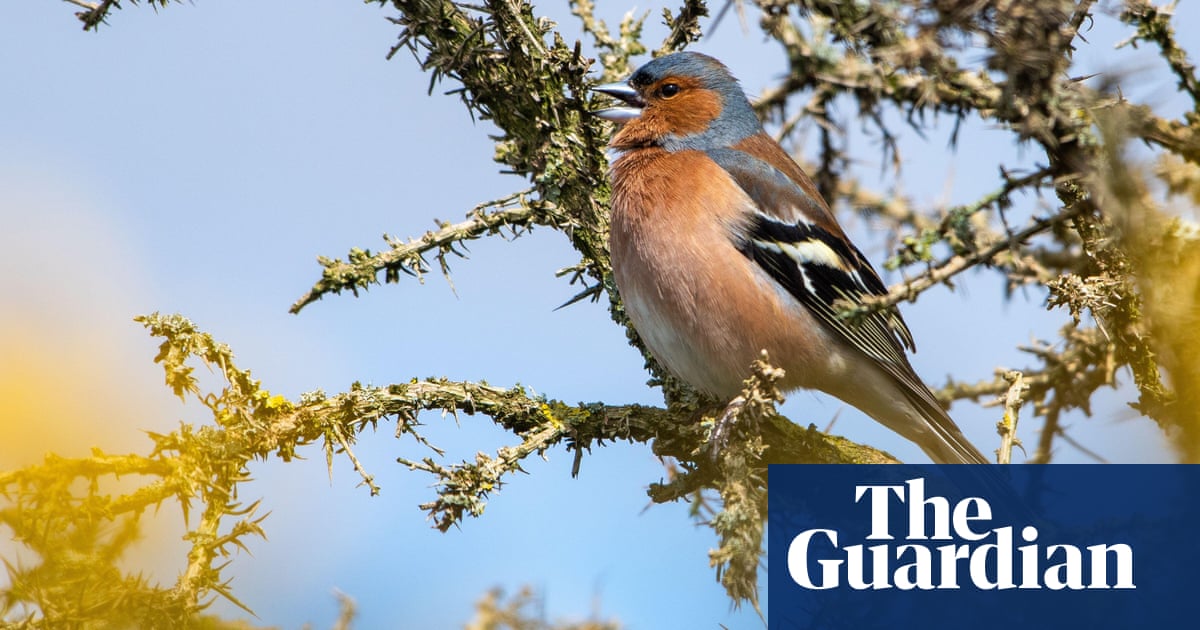A single fink. I stop for the call’s repeat. Instead, the confirmation that a chaffinch has joined the dawn chorus comes with a brief trill culminating in a wheezy flourish. The song is a little like the bird itself: a common thing that’s riven with significance. For the chaffinch is first among finches. With its chinking call, it named itself into Old English as finc – or finch – a name that extended to other species. Centuries later, the poet Gerard Manley Hopkins was surely thinking only of chaffinches when he praised “finches’ wings” in his paean to ordinary contrasts, Pied Beauty.
And here they are, those diagnostic bars of white flashing against the coverts’ black, as the chaffinch lands on a twig in front of me. Sunrise intensifies all his colours: the slate-blue head, the rust breast, the olive rump. His gleaming blue-black bill opens and a wisp of breath pulses from his gape as he sings.
Walking here a few weeks ago, I heard a chaffinch – possibly this very one – sing the trickle of notes that marks the incomplete song of a first-year bird. I’m reminded of the pioneering research of the evolutionary biologist Peter Marler. Working initially on chaffinches in the 1950s, he showed that birdsong is shaped by learning and memory. Songbirds have an innate capacity to produce a version of their species’ song, but they are influenced by the types of songs they hear around them, and youngsters fine-tune their efforts to those of their elders. These cultural aspects of birdsong give rise to local dialects.
There’s another chaffinch singing in the distance. The songs of the two birds sound quite different, but, as their voices become more strident, “my” chaffinch slides his rendition closer to that of his rival’s. This could be a signal that he’s up for any contest. He tilts his head. The other chaffinch has switched to finks. My bird responds with warning huits. As the intruder emerges into view, both birds fall silent. Fluttering their wings and flicking their tails, they bob their face-off up and down the branches. Finally, they leap at each other and tumble through the air before swerving in opposite directions to vanish into the trees.



